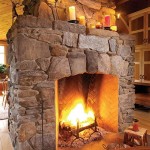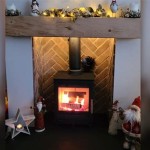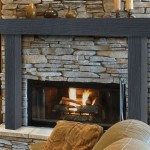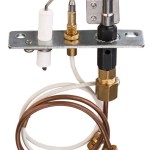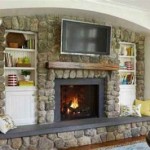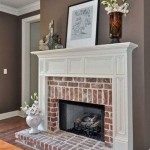Vintage Gas Fireplace Inserts: A Timeless Blend of Style and Function
Vintage gas fireplace inserts represent a fascinating intersection of historical design and modern convenience. These appliances, designed to retrofit into existing fireplace openings, offer a compelling alternative to traditional wood-burning fireplaces or more contemporary gas fireplace models. Their enduring appeal lies in their ability to evoke a sense of nostalgia, while simultaneously providing the efficiency and ease of use associated with gas-powered heating.
The allure of vintage gas fireplace inserts extends beyond mere aesthetics. They offer a practical solution for homeowners seeking to upgrade an existing fireplace, enhance the ambiance of a living space, or supplement a central heating system. Understanding the various aspects of these inserts, from their historical context to their operational characteristics, is crucial for anyone considering integrating one into their home.
The Historical Context of Vintage Gas Fireplace Inserts
The development of gas fireplaces, including inserts, can be traced back to the 19th century, coinciding with the widespread adoption of gas lighting in urban areas. Early gas fireplaces were often viewed as a cleaner and more convenient alternative to wood-burning fireplaces, which were prone to producing smoke, soot, and embers. The design of these early models often reflected the architectural styles prevalent at the time, drawing inspiration from Victorian, Art Nouveau, and Edwardian aesthetics.
The early 20th century witnessed further innovations in gas fireplace technology and design. Manufacturers began experimenting with different burner configurations, gas control mechanisms, and decorative elements to enhance the functionality and visual appeal of these appliances. During this period, inserts gained traction as a way to modernize existing fireplaces without requiring extensive structural alterations.
The mid-20th century saw a shift in design trends, with simpler, more streamlined forms becoming popular. Gas fireplace inserts from this era often featured clean lines, minimal ornamentation, and a focus on functionality. However, even these later vintage models retain a distinct charm and character that sets them apart from their contemporary counterparts. Identifying the specific era and style of a vintage gas fireplace insert is important for both aesthetic and practical considerations, as it can influence its suitability for a particular home and its potential restoration needs.
Key Considerations When Acquiring a Vintage Gas Fireplace Insert
Sourcing and integrating a vintage gas fireplace insert presents unique challenges and opportunities. Unlike modern appliances, these inserts may require specialized knowledge and attention to ensure their safe and efficient operation. Several key considerations should be addressed before making a purchase.
Safety Inspection: Before installation, a thorough inspection by a qualified gas technician is paramount. This inspection should assess the integrity of the gas lines, burner assembly, and venting system. Any signs of corrosion, damage, or leakage must be addressed promptly to prevent potential hazards. Modifying or repairing vintage gas appliances often requires sourcing specific replacement parts or fabricating custom components, which can add to the overall cost of the project. The technician should also verify that the insert complies with current safety codes and regulations.
Venting Requirements: Proper venting is crucial for the safe and efficient operation of any gas fireplace. Vintage inserts may have specific venting requirements that differ from modern appliances. The venting system must be appropriately sized and configured to effectively exhaust combustion gases, such as carbon monoxide, from the home. An improperly vented gas fireplace can pose a serious health risk. It's vital to have a qualified professional assess the existing chimney or venting system to determine its compatibility with the vintage insert. In some cases, modifications to the venting system may be necessary to ensure safe and compliant operation.
Restoration and Refurbishment: Many vintage gas fireplace inserts require some degree of restoration or refurbishment before they can be safely and reliably used. This may involve cleaning and repairing the burner assembly, replacing worn or damaged components, and refinishing the exterior surfaces. The extent of the restoration work will depend on the condition of the insert and the desired level of functionality and aesthetic appeal. While some homeowners choose to undertake the restoration process themselves, it is generally advisable to enlist the services of a qualified professional with experience in vintage appliance repair. Proper restoration not only enhances the appearance of the insert but also ensures its long-term performance and safety.
The Technical Aspects of Operating Vintage Gas Fireplace Inserts
Operating a vintage gas fireplace insert involves understanding its technical characteristics and proper maintenance procedures. While these inserts offer the convenience of gas fuel, they often lack the advanced features found in modern appliances, such as electronic ignition, programmable thermostats, and remote control operation.
Ignition Systems: Most vintage gas fireplace inserts utilize a standing pilot light system. This means that a small flame is constantly burning to ignite the main burner when heat is desired. While this system is relatively simple and reliable, it also consumes a small amount of gas continuously. Some homeowners choose to convert their vintage inserts to electronic ignition systems, which eliminate the need for a standing pilot light and can save energy over time. However, this conversion may require modifications to the insert and should be performed by a qualified technician.
Gas Control Valves: The gas control valve regulates the flow of gas to the burner assembly and controls the flame height and heat output. Vintage gas control valves are often manually operated and may require periodic maintenance or replacement. Signs of a malfunctioning gas control valve include difficulty igniting the burner, inconsistent flame height, or gas leakage. Replacing a gas control valve should only be performed by a qualified gas technician to ensure proper installation and safe operation.
Maintenance Procedures: Regular maintenance is essential for ensuring the efficient and safe operation of a vintage gas fireplace insert. This includes cleaning the burner assembly, inspecting the gas lines and venting system, and lubricating any moving parts. The frequency of maintenance will depend on the usage of the insert and the environmental conditions. It is advisable to consult with a qualified technician to establish a maintenance schedule and to learn the proper procedures for performing routine tasks. Neglecting maintenance can lead to reduced efficiency, increased risk of malfunction, and potential safety hazards.
Beyond the core functional aspects, understanding the specific BTU (British Thermal Unit) output of the insert is crucial. BTU output dictates the amount of heat the insert can generate, impacting its suitability for heating a particular space. A vintage insert with a lower BTU output might be ideal for creating ambiance in a smaller room, while a higher BTU output model might be more effective for supplemental heating in a larger area.
Furthermore, the type of gas used (natural gas or propane) is a critical consideration. Vintage inserts are typically designed for use with one type of gas or the other. Converting an insert from one gas type to another requires specific modifications to the burner assembly and gas control valve and should only be performed by a qualified technician. Using the incorrect gas type can result in inefficient combustion, increased risk of carbon monoxide production, and potential damage to the appliance.
Finally, the availability of replacement parts is a significant factor to consider. Over time, components of a vintage gas fireplace insert may wear out or become damaged. Sourcing replacement parts can be challenging, as many vintage parts are no longer readily available. It may be necessary to search for used parts, fabricate custom components, or adapt modern parts to fit the vintage insert. Before acquiring a vintage insert, it is advisable to assess the availability of replacement parts and to identify potential sources for these parts.
In conclusion, vintage gas fireplace inserts offer a unique blend of historical charm and modern convenience for homeowners seeking to enhance the aesthetics and functionality of their living spaces. However, acquiring and operating these appliances requires careful consideration of various factors, including safety, venting requirements, restoration needs, and technical characteristics. By understanding these aspects and enlisting the services of qualified professionals, homeowners can enjoy the timeless appeal and efficient heating capabilities of vintage gas fireplace inserts for years to come.

Belmont Small Gas Insert

Windsor Small Victorian Style Gas Insert

Belmont Small Gas Insert Vintage Fireplace

Gas Inserts For The Old Fireplaces San Francisco Victorian Restoration

Gas Fires For Victorian Fireplaces Fireplace Wood Burning Inserts Design

Belmont Small Gas Insert

Valor Portrait Classic Arch Gas Fireplace Insert Fergus

Belmont Small Gas Insert Old Fireplace

Gas Fireplace Inserts Pros And Cons Of Ventless Fireplaces

Gas Fireplace Insert Recycling The Past Architectural Salvage
Related Posts


